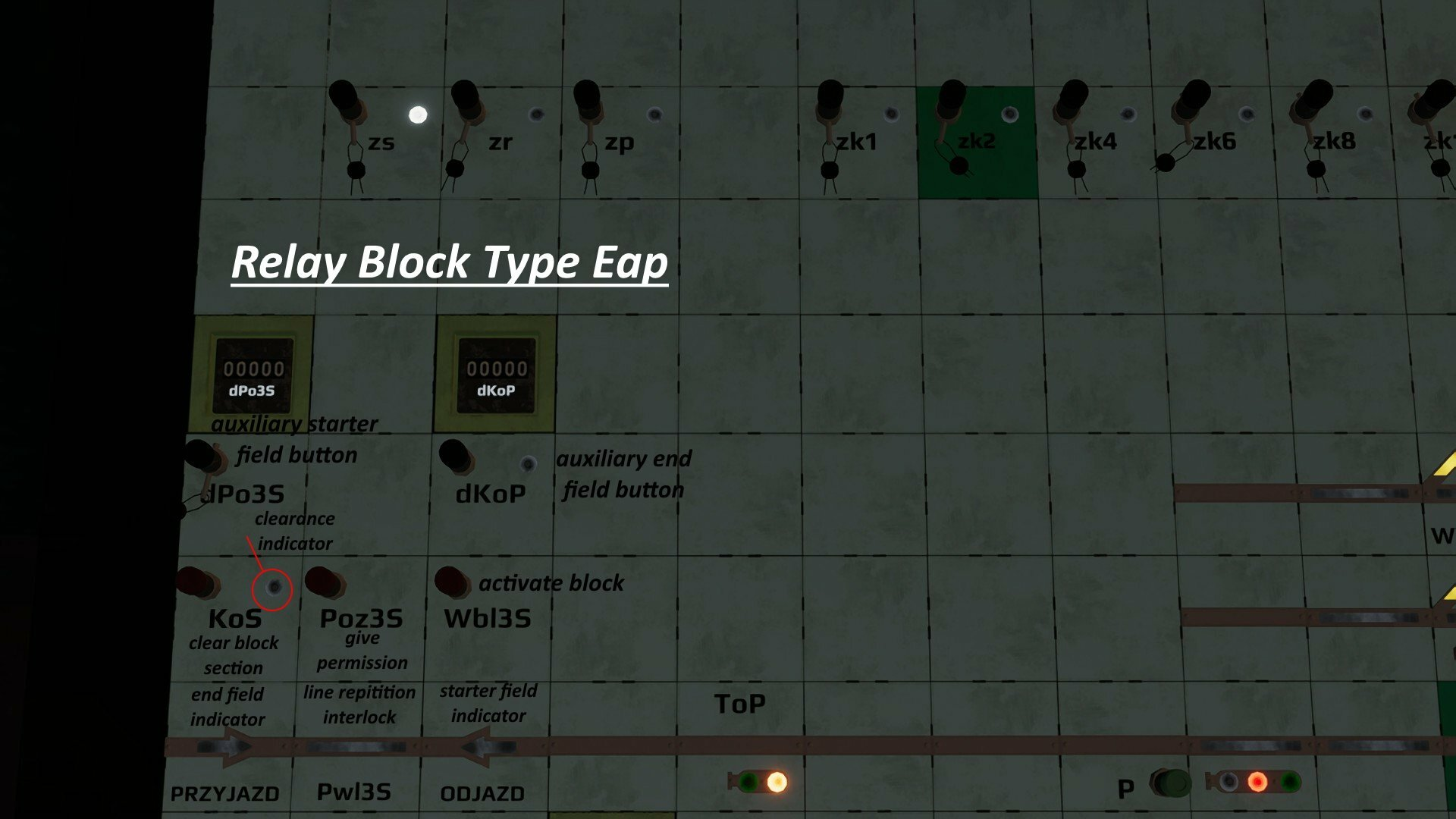Translations:How to operate relay line block equipment/19/en: Difference between revisions
(Importing a new version from external source) |
(Importing a new version from external source) |
||
| Line 1: | Line 1: | ||
== | == Line block type Eap == | ||
[[File: | [[File:SimRail Eap EN.png|center]] | ||
The Eap type line block is a relay block based on the Eac type automatic line block. This Eap line block therefore works partially automated. There are no classical fields any more. Instead, it has two arrow-shaped detectors: A train so-called starter field indicator, pointing away from our station, and a so-called end field indicator, pointing in our direction. Between the two arrows, there is still the line repetition interlock (Pwl), working exactly the same way as in the type C relay block (see above). | |||
The Eap block always allows a track to be operated in both ways while being under technical protection, so there will also be "NP" and "NO" buttons where fitted, provided it is a double-track line. Notes for the operation of "NO" and "NP" are as described for SBL installations (see below), provided that movements take place on the opposite track. | |||
Optionally, the Eap block can also be equipped with a track vacancy detection system. | |||
If there is no train running at the moment, the Eap block is in a neutral state and all indicators are extinguished. | |||
Latest revision as of 01:58, 18 April 2024
Line block type Eap
The Eap type line block is a relay block based on the Eac type automatic line block. This Eap line block therefore works partially automated. There are no classical fields any more. Instead, it has two arrow-shaped detectors: A train so-called starter field indicator, pointing away from our station, and a so-called end field indicator, pointing in our direction. Between the two arrows, there is still the line repetition interlock (Pwl), working exactly the same way as in the type C relay block (see above). The Eap block always allows a track to be operated in both ways while being under technical protection, so there will also be "NP" and "NO" buttons where fitted, provided it is a double-track line. Notes for the operation of "NO" and "NP" are as described for SBL installations (see below), provided that movements take place on the opposite track. Optionally, the Eap block can also be equipped with a track vacancy detection system. If there is no train running at the moment, the Eap block is in a neutral state and all indicators are extinguished.
